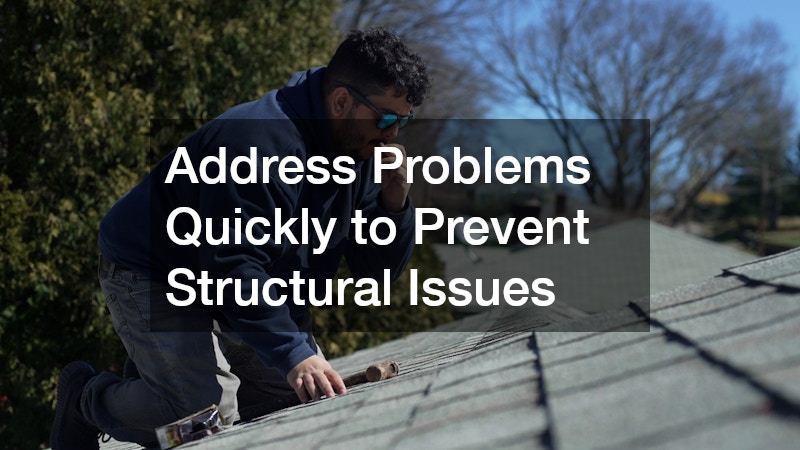
When heavy rain hits, your home becomes the first line of defense between you and the elements. While rainfall can be refreshing and necessary for the environment, it can also pose serious threats to a home’s structure, foundation, and interior if preventative measures aren’t in place. Leaks, flooding, mold growth, and damaged exteriors are all potential outcomes of inadequate preparation. Whether you live in an area known for frequent storms or experience occasional downpours, taking the time to protect your home from excess moisture is one of the most important investments you can make.
Protecting your property from heavy rain isn’t just about quick fixes—it’s about long-term planning. From inspecting your home’s roof to managing outdoor spaces and drainage systems, every step contributes to a stronger, more weather-resistant structure. By addressing small issues before they escalate, you can prevent expensive repairs, maintain your property’s value, and enjoy peace of mind no matter what the forecast brings. Here are ten practical and effective ways to safeguard your home from heavy rain.
1. Inspect and Maintain the Top of Your Home Regularly

The first and most important step to protecting your home from heavy rain is ensuring the uppermost part of your structure is in excellent condition. Roofs endure constant exposure to sunlight, temperature changes, wind, and rain, which means they naturally experience wear over time. Regular inspections—at least twice a year—help identify potential weak spots, such as loose shingles, cracked flashing, or deteriorated sealant. Catching these issues early can make all the difference between a minor fix and a costly water damage restoration. Preventive care not only preserves your home’s structure but also improves its energy efficiency and overall comfort.
When rainwater finds its way under shingles or tiles, it can seep into the attic or insulation, causing rot, mold, and interior ceiling stains. Professional roof repairs can address these vulnerabilities before they compromise your home’s integrity. Scheduling inspections before and after storm seasons ensures your roof remains strong and watertight. Even small repairs, such as sealing gaps or replacing missing shingles, significantly improve your home’s defense against downpours. Homeowners can also benefit from keeping records of all maintenance and repairs, which helps track long-term roof performance and can even increase property value when it’s time to sell.
2. Partner With Experienced Professionals for Reliable Protection
While some homeowners enjoy tackling maintenance tasks themselves, certain projects require the expertise of trained professionals. Heavy rainfall can quickly reveal flaws in a roof or drainage system, and attempting to fix complex issues without proper experience can lead to greater damage. Working with qualified specialists ensures the job is done safely, effectively, and up to local building standards. Experts also know how to identify potential problems that might not be visible to an untrained eye. In addition, they have access to specialized equipment, high-quality materials, and the latest installation techniques designed to maximize weather resistance.
Experienced roofing contractors bring knowledge, advanced tools, and quality materials to every project. They can evaluate your home’s structure, provide recommendations based on local weather patterns, and implement preventative strategies to improve resilience against severe storms. By partnering with a reputable team, you gain the assurance that your home’s most critical features are in capable hands, reducing the risk of future water infiltration. Beyond emergency repairs, many professionals offer maintenance programs that include seasonal inspections and minor adjustments, ensuring your roof stays in top shape year-round. Building a long-term relationship with skilled contractors provides peace of mind during every rainy season.
3. Add Functional Overhead Structures for Outdoor Areas

Outdoor living spaces like patios and decks add comfort and versatility to any home, but they can also be vulnerable during periods of heavy rainfall. Without proper shelter, these areas can collect standing water, damage furniture, and accelerate wood deterioration. Adding an overhead structure provides both comfort and protection, ensuring your outdoor space remains usable even during a drizzle. These structures also reduce the amount of direct rainfall hitting exterior walls, which can extend the lifespan of your siding and doors. For homeowners who love entertaining outdoors, a sturdy cover transforms a vulnerable area into a year-round gathering spot.
Installing sturdy patio covers not only shields your outdoor areas but also enhances your property’s aesthetic and value. Many modern options include water-resistant materials and integrated guttering systems that direct runoff away from the house. Whether you choose a solid roof, an adjustable louvered design, or a translucent panel system, these features help manage rainfall efficiently while keeping your outdoor space dry and inviting. Some designs even incorporate lighting or fans for added comfort. Beyond protection, a well-designed cover can improve your home’s curb appeal, blending beauty and function in a way that withstands the harshest weather.
4. Schedule Routine Cleanings and Maintenance Services
An often-overlooked aspect of home maintenance is the drainage system along the roofline. Gutters play a critical role in directing rainwater away from the foundation, but they require consistent upkeep to function properly. Leaves, twigs, and other debris can easily clog the channels, preventing water from flowing freely. When blockages occur, water can overflow, seep into walls, or erode the soil surrounding the foundation. Regular cleaning ensures that your drainage system remains clear and efficient. Well-maintained gutters also prevent standing water from attracting pests like mosquitoes and can help extend the life of your roof and siding.
Many homeowners prefer to work with professional gutter companies to handle routine maintenance safely and thoroughly. These specialists have the right tools and expertise to clean, inspect, and repair any damaged sections. They can also install gutter guards or screens to reduce future buildup, minimizing the need for frequent cleanings. By scheduling these services before rainy seasons, you reduce the risk of overflow and potential water damage to your home’s exterior. Professionals can also identify weak spots or misalignments that cause water pooling, ensuring every drop flows away from your home as intended. This proactive care provides long-term protection and prevents expensive repairs later on.
5. Hire Nearby Experts Who Understand Regional Weather Patterns

When it comes to home maintenance, local knowledge matters. Every region faces unique weather challenges—some areas deal with torrential rain and humidity, while others experience occasional heavy storms. Professionals who live and work in your community are more familiar with these local conditions and know which materials and installation techniques work best for long-term protection. Their insight helps ensure your home can withstand whatever nature brings. Local experts also tend to be more accessible, offering timely communication and personalized recommendations that align with the specific climate of your area.
Hiring local roofers gives you the added advantage of quick response times and personalized service. They can provide faster inspections and repairs after storms, which is especially important when weather-related issues require urgent attention. These professionals often build long-term relationships within the community, offering ongoing support and seasonal maintenance tailored to the area’s climate trends. Their hands-on experience ensures that your home remains well-prepared for heavy rainfall year-round. Working with local specialists also supports small businesses in your area, contributing to a stronger local economy while ensuring your home receives care from experts who truly understand your environment.
6. Ensure Prompt Attention to Minor Leaks and Damage
Small leaks might seem harmless at first, but even minimal water intrusion can lead to serious structural problems over time. Moisture that enters through a tiny opening can damage insulation, stain ceilings, and weaken wood framing. The longer these issues are ignored, the more extensive—and expensive—the repairs become. Early detection and intervention can save homeowners from significant frustration and financial loss.
A skilled roofer can identify and fix leaks before they worsen. Whether it’s resealing flashing, replacing cracked shingles, or addressing ventilation issues, timely action preserves the roof’s integrity and prevents water from spreading inside the home. Regular checkups, especially after heavy storms, ensure any developing concerns are quickly resolved. Consistent attention to these small details goes a long way in protecting your property from moisture damage.
7. Address Problems Quickly to Prevent Structural Issues

Heavy rainfall can expose existing weaknesses in a roof system. If these vulnerabilities aren’t repaired promptly, water may seep into areas that compromise your home’s structure. Moisture can deteriorate wooden beams, rust metal fixtures, and create the perfect environment for mold growth. Acting quickly when you notice signs of trouble helps prevent the chain reaction of damage that often follows prolonged exposure to water.
Professional roof repair services can restore the strength and function of your home’s primary shield against rain. Specialists use proven methods to reinforce problem areas and ensure a watertight seal. They can also recommend additional improvements, such as applying protective coatings or installing upgraded underlayment for added defense. Addressing small issues right away not only prevents costly structural repairs but also maintains your home’s long-term stability.
8. Work With Reputable Specialists for Long-Term Results
Protecting your home from rain is not just about temporary fixes—it’s about creating lasting solutions. A well-maintained roof and drainage system should withstand years of varying weather conditions. To achieve this, homeowners should collaborate with professionals who prioritize quality workmanship and durability. Long-term protection comes from using premium materials, thorough installation practices, and consistent follow-up care.
Partnering with a reliable roofing company ensures that each component of your home’s exterior performs as it should. From the initial inspection to the final cleanup, these experts take a comprehensive approach that considers both aesthetics and function. They can offer maintenance plans and warranties that keep your roof in top condition season after season. With their help, you can rest assured that your home remains protected no matter how severe the rainfall becomes.
9. Choose Durable Materials Designed for Harsh Conditions
Not all materials perform equally under constant exposure to moisture. When choosing roofing materials, homeowners should consider options that can resist water absorption, prevent rot, and endure extreme temperature changes. Durability doesn’t only protect your home—it also reduces maintenance costs and extends the life of your roof. Selecting materials suited to your region’s weather conditions can make a substantial difference in how well your home withstands heavy rain.
For instance, cedar shake roofing offers both natural beauty and strong performance against moisture. Its thick, textured design helps shed rain efficiently while providing excellent insulation. When properly treated and maintained, this material can resist mold and decay better than many alternatives. Investing in durable materials like this enhances your roof’s longevity and ensures your home remains secure and attractive for years to come.
10. Keep Drainage Systems Clear to Avoid Water Buildup
Even the best roofing system can’t protect a home from water damage if the drainage system isn’t functioning properly. Gutters and downspouts play an essential role in directing water safely away from your home’s exterior and foundation. When they’re blocked or poorly installed, water can pool on the roof, overflow near entryways, or infiltrate basement walls. Regular maintenance is the key to ensuring efficient water flow and minimizing potential damage during heavy rainfall.
Cleaning and inspecting rain gutters should be part of your seasonal home care routine. Removing debris, checking for rust or cracks, and ensuring downspouts are positioned correctly all contribute to a reliable drainage system. Homeowners can also consider adding extensions or splash blocks to guide water even further from the foundation. Consistent attention to these details keeps your home dry, prevents erosion, and protects your investment from the destructive power of standing water.
Heavy rainfall can be unpredictable, but your home’s preparedness doesn’t have to be. By taking a proactive approach, you can reduce the risk of water damage, preserve structural integrity, and maintain a safe and comfortable living environment. From maintaining the uppermost parts of your home to managing outdoor spaces and drainage systems, each action contributes to your home’s overall resilience.
Long-term protection comes down to vigilance and consistent care. Inspections, maintenance, and the right materials all work together to form a comprehensive defense against the effects of heavy rain. Homeowners who stay ahead of potential problems not only save money in the long run but also gain peace of mind knowing their property can withstand nature’s challenges. Taking these preventive measures ensures that when the next storm arrives, your home will remain strong, secure, and ready for whatever comes next.
